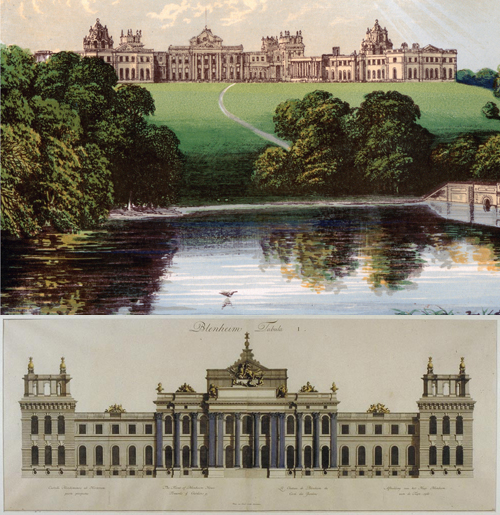
Your complimentary articles
You’ve read one of your four complimentary articles for this month.
You can read four articles free per month. To have complete access to the thousands of philosophy articles on this site, please
Visions of Society
Aesthetic Democracy
Mihail Evans studies art to understand politics.
The work of Frank Ankersmit on representation and democracy is surprisingly little known even among academics working in political theory. At the end of the 1990s, already one of the most eminent figures globally in the philosophy of history, this professor at the University of Groningen in the Netherlands turned his attention from the problems of historical representation to the related one of political representation. He argues that many of the big problems faced by contemporary society can be best addressed if we look again at what happens in the process of representation and understand our societies as examples of what I call ‘aesthetic democracy’, and he prefers to name ‘aesthetic politics’.
Ankersmit published two important books on contemporary democracy: Aesthetic Politics: Political Philosophy Beyond Fact and Value (1997), and Political Representation (2002), but neither of these have ever attracted they attention they deserve, so I will outline something of the basics here.

Two pictures of Blenheim Palace. “One piece of canvas with dots of paint on it resembles another such piece of canvas far more than it resembles some huge building in the Oxfordshire countryside,” Ankersmit argues.
The Novelty Of Democracy
In understanding any political system, Ankersmit argues that we must ask what the problem was that the system was expected to solve. Democracy has become so overwhelmingly accepted in modern western societies that we tend to presume that it is the unquestionable solution to every political problem that now confronts humanity, or might ever do so. But Ankersmit suggests that, on the contrary, democracy as we now understand it is a comparatively recent development, and dates only from the post-Napoleonic period in Europe, from the nineteenth century onwards. In order to understand how democracy emerged, he says we need to go back to the wars of religion that tore Europe apart in the seventeenth century. Absolute monarchy was almost inevitable at their conclusion, because it offered the only plausible political solution to the problems that then faced the continent: only the state, dominated by a single figure, could stand above the combatants and arbitrate a final settlement.
But at the end of the eighteenth century a new conflict emerged, beginning with the American War of Independence and the French Revolution. Revolutionaries, liberals, conservatives, and others, began to fight about who would control the state. (Ankersmit finds a marked difference between continental European and Anglo-Saxon experiences. In both Britain and the United States, the central political fight was not for control over the state, but rather to keep the power of the executive within reasonable limits.) The new politics was a new type of problem, for which the old absolutist solution would not work. In response, a new political culture developed, which focused on striving for compromise rather than consensus. Politics came to be about practical cooperation rather than being based on ideological agreement. A new era of “the embrace of a principled unprincipledness” opened against a background of political Romanticism, with its glorification of political multiplicity, paradox, oppositions and contradictions (see Ankersmit’s ‘Representational Democracy: An Aesthetic Approach to Conflict and Compromise’, in Common Knowledge 8.1, p.27, 2002). Democratic representation allowed a way to diffuse the central conflicts in society.
Divided Against Ourselves
Ankersmit argues that in the contemporary world a further shift has taken place. We used to face problems which set one part of the population against another; now we face political dilemmas in which together we are all authors of the problem as much as victims of it. Examples Ankersmit gives of this include traffic jams and environmental crises. In this situation, rather than society being divided into opposing groups, conflict is internalised in the individual.
He argues that our current forms of democracy are not very good at solving these sort of problems. How then can our political systems respond to them? The answer, he suggests, lies in looking at the fundamentals of representation.
Our form of democracy, which depends on representation – where we vote for people who will take political decisions on our behalf – must be distinguished from classical democracy, which was a direct democracy. In ancient Athens the male, property-owning citizens were required to vote on important issues in person. Many political philosophers have been greatly enamoured of direct democracy, and many political movements seek to move towards ever greater political participation. But Ankersmit is wary of direct democracy, and suggests that many problems are not amenable to solution by ever more elaborate processes of discussion. Instead he thinks that the idea of political representation, which originates in the medieval period with the assemblies that kings summoned of the nobility, clergy and the third estate, actually adds something to political life, rather than being an unfortunate compromise caused by polities having large numbers of people.

What Is It To Represent?
What does all this have to do with aesthetics and art? Well, Ankersmit argues that in order to understand representational democracy, we must understand what is going on in representation more generally. (Here his analysis overlaps with his renowned work in historiography.) There are two main theories offered by aestheticians about the nature of representation in art, in painting a portrait of someone, for example. The first is that resemblance is central to representation: in order to be a representation, a work of art must resemble what its representing. However, this conception is not very satisfying, because no generally acceptable criteria have ever been put forward for what a successful resemblance might consist in. For instance, paintings, as art historians will tell you, resemble each other much more than they resemble the objects in the world that they depict. And if we try to apply the resemblance theory in politics, we could find that every difference between the electorate and its representatives is a case of political misrepresentation. From this point of view concerning representation, what matters above all is how well the representatives in the political debating chamber reproduce the thinking of the population at large.
Ankersmit is much more convinced by thesubstitution theory of representation in art, whose supporters have included the art critics Kenneth Burke, Ernst Gombrich, and Arthur Danto. For them, representation is a making present again of what is currently absent. These aestheticians stress that something original is going on in the process of artistic creation; that something extra is created. Looked at from this perspective, without representation, there is no represented. To put this politically, without bodies such as the House of Commons (UK and Canada) or the House of Representatives (USA, Australia and NZ), there would be no political nation. The very existence of politically representative institutions brings into being a political society that would not otherwise exist.
This theory further suggests that what is most important in politics is the interaction between the represented and the representatives, and in particular, that the representatives should be in a position to transform the represented. Ankersmit argues that a politician must possess an “essentially aesthetic talent of representing political reality in new and original ways” (‘Representational Democracy’ p.36). He also argues that representation deals with the organisation of truth rather than with truth itself. Representative democracy is thus better at compromise than consensus, because compromise organises existing knowledge rather than discovering or defending it. Compromise stimulates political creativity, where consensus kills it: consensus is essentially conservative, not creative. Conflicts that appear hopelessly irreconcilable at the level of the population (the represented) are often soluble through compromise at the level of political institutions (representation). A great example of this in our time is the peace settlement in Northern Ireland. The welfare states of various nations are also examples of the creativity of compromise. The reason they are best developed in European continental societies was because their political systems were more orientated towards compromise.
Contrary to much received wisdom on the issue, in order to work best, politicians therefore need to be distant from citizens rather than closer. In my own current work I focus on a related view of democracy, which could be called ‘negative democracy’, whose most prominent thinker is Jacques Derrida. Derrida’s work focuses much less on the representatives than Ankersmit’s, and is much more interested in elaborating the need for creative spaces in which many different elements, from the media to NGOs, engage in the larger processes of the manifestation of opinion. I would argue it is a richer and less elitist version of Ankersmit’s aesthetic democracy. Yet I agree that the key is a need to understand how representation works as something politically creative.
Ankersmit ultimately argues that what we need to do is make our political institutions more representational – that is, to widen the gap between the represented and the representatives, so that “our legislative representatives be less responsive to the daily desires of their constituents and more attentive to the whole picture” (‘Representational Democracy’ p.46). This solution, which rejects demands for ever-greater participation in modern democracies, is a provocative one, but its reformulation of how to unleash the political creativity necessary to solve our intractable contemporary problems is still owed a proper hearing.
© Dr Mihail Evans 2016
Mihail Evans is Research Fellow at the New Europe College/Institute for Advanced Studies in Bucharest. He is a graduate of the Universities of Wales, Oxford, Nottingham, and of UWE, Bristol.






